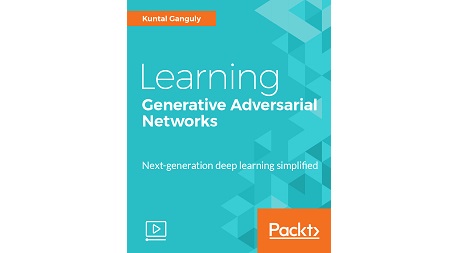
English | MP4 | AVC 1920×1080 | AAC 44KHz 2ch | 1h 36m | 503 MB
Build image generation and semi-supervised models using Generative Adversarial Networks
Generative models are gaining a lot of popularity among data scientists, mainly because they facilitate the building of AI systems that consume raw data from a source and automatically build an understanding of it.
Unlike supervised learning methods, generative models do not require labeling data, which makes for an interesting system to use. This video will help you build and analyze deep learning models and apply them to real-world problems. It will help readers develop intelligent and creative application from a wide variety of datasets, mainly focusing on visuals or images.
The video begins with the basics of generative models, as you get to know the theory behind Generative Adversarial Networks and its building blocks. In this video, you’ll see how to overcome the problem of text-to-image synthesis with GANs, using libraries such as Tensorflow, Keras, and PyTorch.
Transferring styles from one domain to another becomes a headache when working with huge data sets. Using real-world examples, we will show how you can overcome this. You will understand and train Generative Adversarial Networks, use them in a production environment, and implement tips to use them effectively and accurately.
This course adopts a problem/solution approach. Each video focuses on a particular task at hand, and is explained in a very simple, easy-to-understand manner.
What You Will Learn
- Understand the unsupervised deep learning concept
- Transfer images to image styles across various domains
- Build a realistic image from text
- Deploy deep models on the cloud with GKE
Table of Contents
01 The Course Overview
02 Introduction to Deep Learning
03 Automating Human Tasks with Deep Neural Networks
04 Implementation of GAN
05 Challenges of GAN Models
06 Improved Training Approaches and Tips for GAN
07 Introduction to Conditional GAN
08 Training Procedure of BEGAN
09 Image to Image Style Transfer with CycleGAN
10 Introduction to StackGAN
11 Discovering Cross-Domain Relationship with DiscoGAN
12 Generating Handbags from Edges with PyTorch
13 Gender Transformation Using PyTorch
14 Building an Image Correction System Using DCGAN
15 Microservice Architecture Using Containers
16 Various Approaches to Deploy Deep Models
17 Serving Keras-Based Deep Models on Docker
18 Serverless Image Recognition
Resolve the captcha to access the links!